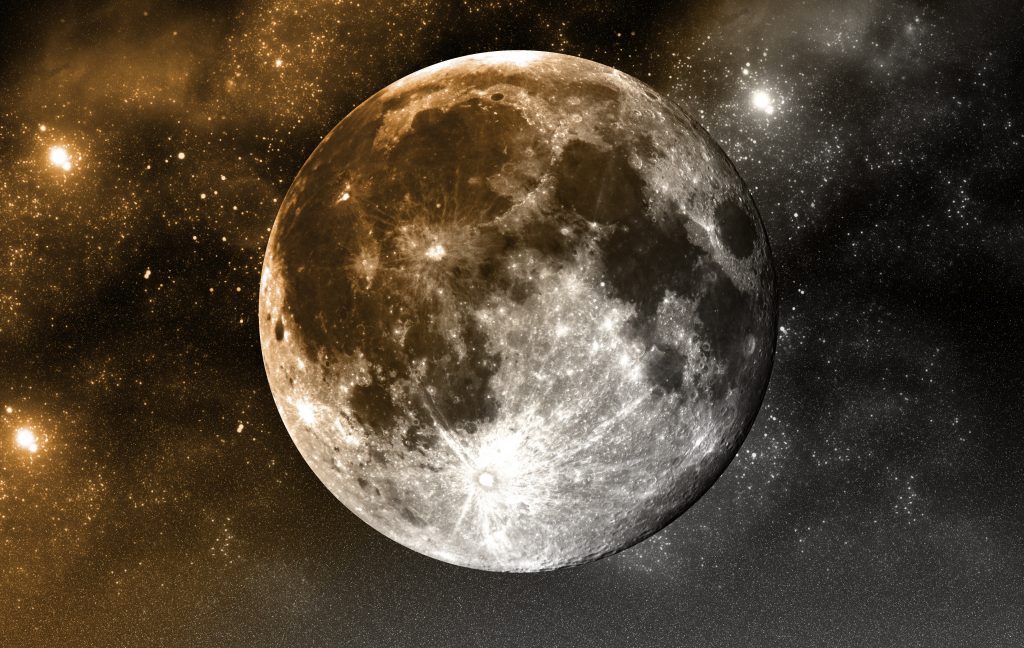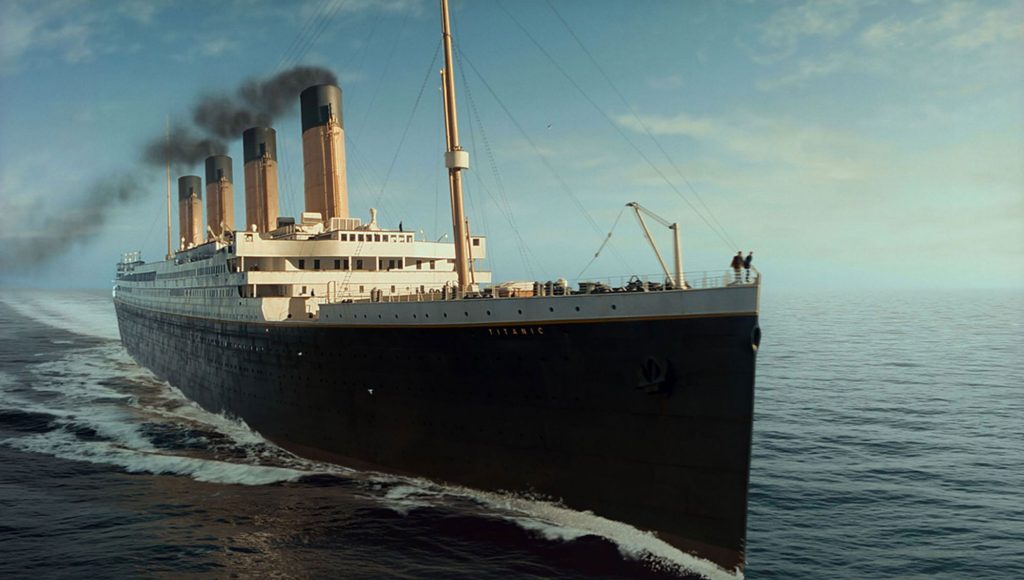The Race Into Space
There are currently more than 7 billion humans crammed together on this one planet. If something happened to Earth, our species could be wiped out.
Humans didn’t evolve to go into space, but we go there anyway. Colonizing other bodies in the solar system is a way to create a “backup” of humanity that will survive no matter what happens to Earth. And without those earlier historic flights we wouldn’t have GPS, accurate weather prediction, solar cells, or the ultraviolet filters in sunglasses and cameras. So my program features the historic events based around various moon landing attempts, and what happened in July 1969 which of course was the Apollo 11 moon landing. I’ll be playing some Presidential speeches as well as iconic music tracks throughout the program including music from the 2018 movie Apollo 13, directed by Ron Howard and starring Tom Hanks.
In 1961 the Soviet Union launched the first man into space and in the same year, Astronaut Alan Shepherd became the first American in space with a suborbital flight aboard the Mercury capsule Freedom 7. Following this, President Kennedy announced during a speech in May 1961, that the race into space, had begun.
NASA’s first high profile program was Project Mercury, an effort to learn if humans could survive in space. This was then followed by Project Gemini which helped NASA get ready for the Apollo moon landings. Project Gemini had four main goals: to test an astronaut’s ability to fly long-duration missions (up to two weeks in space); to understand how spacecraft could rendezvous and dock in orbit around the Earth and the moon; to perfect re-entry and landing methods; and to further understand the effects of longer space flights on astronauts.
So from 1961 dominance in the skies became more important than land battles; it was a way to prove unchallenged superiority to the entire world.
But not all launches went to plan.
One of the worst tragedies in the history of spaceflight occurred on January 27, 1967 when the crew of Gus Grissom, Ed White, and Roger Chaffee were killed in a fire in the Apollo Command Module during a preflight test at Cape Canaveral. The tragedy occurred as the trio were preparing for the first manned Apollo flight. The crew entered the command module at around 1 p.m. There was a bad smell, which put the rehearsal countdown on hold but was later found to be unrelated to the event. Then At 6:31 p.m., cries began: “We have a fire in the cockpit!”. Those watching on a video feed saw Ed White appear to reach for the handle of the hatch. The command module then “ruptured’ according to NASA, and flames and gas spilled out. It took personnel about five minutes to open all the hatches into the capsule. And once they could get inside, they could barely see anything at all.
Following the Apollo 1 tragedy, and in the same year the death of a soviet cosmonaut whose spacecraft’s re-entry parachute failed, both countries space programs halted flights for a year. In the wake of the Apollo fire and investigation, changes took place to ensure that this horrific accident never happened again such as the capsule’s hatch was replaced with one that would open outward, quickly and the cabin atmosphere during prelaunch testing was no longer 100 percent oxygen, but rather a mixture of oxygen and nitrogen.
Eight days, three hours, 18 minutes and 35 seconds. That is the total duration of the most important and celebrated space mission ever flown – Apollo 11 – when humans first set foot on the moon. It was a journey that changed the way we think about our place in the universe. But we only saw a fraction of what happened – a handful of iconic stills and a few precious hours of movie footage.
Those who were alive at the time to experience this event, and I can count myself in that, can most likely, even 50 years later, tell you exactly where they were at the time. Many will tell you that they were sitting in their living room, watching on a black and white TV, listening intently to the reporting of Walter Cronkite. The astronauts Neil Armstrong, Edwin Buzz Aldrin and Michael Collins have just blasted off, sitting atop a rocket that contains enough propellant to blow them to kingdom come if anything goes wrong – and there is every chance it will… They are 36 miles above the Earth, as the escape tower jettisons their last chance to abort the mission before entering Earth’s orbit. And yet here they are, joking about being able to see out of the windows for the first time. These are some very cool customers indeed…
When Neil Armstrong and Buzz Aldrin stepped onto the surface of the moon, the entire world was watching, every person captivated and inspired — regardless of nationality, ethnicity, income or gender. And astonishingly, what Armstrong’s first words on the Moon were going to be, were unknown to anyone, up until the moment he said them.
Despite being asked what he would say innumerable times in the run up to the mission, as these words would be the most famous words every uttered by a human being, Armstrong always insisted that he had no idea what he would say and that something would come to him at the moment of his first step. And something did…
By 1970, the space program had become rather humdrum. The previous year had witnessed Apollo 11’s historic first Moon landing, and by early 1970, NASA’s run of success had turned much of the nation complacent. Many wondered whether fixing problems on Earth demanded more attention than exploring the Moon. It was in this climate that Apollo 13 set off on April 11 in 1970 for the third lunar landing, its mission devoted largely to science.
Jim Lovell served as Apollo 13’s commander. This was his fourth trip into space and he was joined by a pair of rookies: Command Module Pilot Jack Swigert and Lunar Module Pilot Fred Haise.
At 55 hours, 46 minutes, as the crew finished a 49-minute TV broadcast showing how comfortably they lived and worked in weightlessness, Lovell said, “This is the crew of Apollo 13 wishing everybody there a nice evening, and we’re just about ready to close out our inspection of Aquarius and get back for a pleasant evening in Odyssey. Good night.” Nine minutes later, oxygen tank No. 2 blew up, causing the No. 1 tank to also fail. The command module’s normal supply of electricity, light and water was lost, and they were about 200,000 miles from Earth. At one hour, 29 seconds acer the bang, a ground flight support crew said “Oxygen is slowly going to zero, and we are starting to think about the luna module lifeboat.” Ground controllers in Houston faced a formidable task. Completely new procedures had to be written and tested in the simulator before being passed up to the crew. The navigation problem had to be solved; essentially how, when and in what altitude to burn the luna module descent engine, so as to provide a quick return home. In spite of the hardships caused by limited power, loss of casing heat and the critical need to improvise the carbon dioxide removal system, the crew returned safely to Earth on April 17. 1970.
Thought the actual mission was a failure, it was referred to as NASA’s finest hour. Missions continued with Apollo 14 that same year and Apollo 15 in the summer 1971. These contributed much to NASA’s space research; however, with budget cuts, Apollo 16 and 17 ended the Apollo legacy in 1972.
Many successful missions occurred for NASA during the 1970s such as in 1975, when the U.S. and the Soviet Union together joined forces to create the first international piloted space mission named the Apollo- Soyez mission.
Then in 1986, disaster struck. On the night before the launch, central Florida was swept by a severe cold wave that deposited thick ice on the launch pad but this didn’t stop Mission Control telling Scobee, “Challenger, go with throttle up,” and seconds later the vehicle disappeared in an explosion just 73 seconds after liftoff, at an altitude of 14,000 metres. Tapes salvaged from the wreckage showed that the instant before breakup Smith said “Uh-oh,” but nothing else was heard.
The immediate cause of the Challenger accident was suspected within days and was fully established within a few weeks. The severe cold reduced the resiliency of two rubber O-rings that sealed the joint between the two lower segments of the right-hand solid rocket booster. The Challenger disaster, was the first major shuttle accident.
The battle of the Race into Space continued between the Soviet Union and USA and in 2000 they came together as the American and Russian crew begins living aboard the international space station. Then on February 1st, 2003, another disaster.
About 82 seconds after Columbia left the ground, a piece of foam fell from a “bipod ramp” that was part of a structure that attached the external tank to the shuttle. No inspection was made and so after completing their scientific experiments mission, the landing mission proceeded without further inspection. It was later found that a hole on the left wing allowed atmospheric gases to bleed into the shuttle as it went through its fiery re-entry, leading to the loss of the sensors and eventually, Columbia itself and the astronauts inside.
The space shuttle program was retired in August 2011 acer 135 missions mainly due to the cost. Getting to the moon was seen as ironically, astronomical. Over the many missions into space, Apollo astronauts snapped photos of the Earth from afar that are credited with helping propel the environmental movement in the 1970s. “What the Apollo program did was convert the moon from an object of fascination to a place we could explore”. NASA’s latest envisionary plan is to land humans on the moon by 2024, with the ultimate goal of establishing a base to test space technologies and act as a way- station to Mars.
And In the latest battle of the billionaires, Musk, Branson and Bazos are working hard to create a new trend of ‘space tourism’. And if you have hundreds of thousands of dollars to spare, a ticket into space, could be yours!
I’m Maggie Morgan and you can listen to my program Meet Me At The Movies on 2RRR88.5FM every Tuesday 9.00am – 10.00am or on the Community Radio Network.

